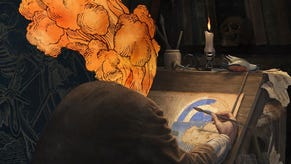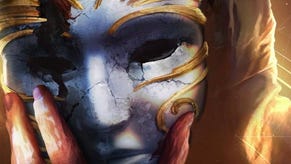Retrospective: Planescape Torment
What can change the nature of a fan?
You can also finish nearly the whole game without fighting or killing anyone, and the experience system reflects that - it rewards combat third, quest-based experience second, and character role-playing, party development and introspection first. Towards the end of the game just talking to yourself can give you more experience than you've got in the whole of the game. You only get a chance to use nearly all the powerful spells once. The largest, most interesting portions of the game are completely optional - the undead city and the rat hive mind can be mostly avoided, Coaxmetal (the towering, monstrously-evil smithy-golem that manufactures weapons for the eternal Blood War) is hidden, your old journals, body-arts and tombs are scattered around the world, and even being mazed by the Lady of Pain is dependent on you being an idiot. Why, if Planescape is so good, did we give it 7/10 back in the day? Why didn't it sell? Like most of the games produced by Black Isle and its successor studios Troika and Obsidian (KOTOR 2, Vampire: The Masquerade - Bloodlines), PST was far too ambitious, so massed community-patches are needed to add in the missing content. There's a wide range of them, with several collated by the ever-excellent Spellhold Studios who also have fixes and extensions to a range of other Infinity Engine games, including Baldur's Gate. The most useful patch allows you to run the game at modern resolutions - unfortunately, we've had trouble running that alongside other fixes from Qwinn that reinstate lots of missing content and voices that were hidden in the shipped game.

Also, let's face it, that box art was bloody awful (the Nameless One's scabby, impassive face looming at you like Judge Dredd in his Dead Man days - Tony Benn is sexier) and Interplay would have been better sticking with the original name, "Last Rites". Even the design document, though a joy to read, admits, "We were initially worried that a game with a severed head in it wouldn't sell. So we said, 'well, Interplay might go for it.'" That design brief also has a million other brilliant ideas that would have delayed the game by a year if they'd all been implemented, like talking weapons, and a planned alternative super-good ending.
What has the gaming world taken from PST? No-one seriously considers going back to the imaginative indistinctiveness of painted 2D although it is demonstrably beautiful - only the CG-art backgrounds of Guild Wars approach it. Even developer Chris Avellone's said he wouldn't make a sequel - though he'd like to follow up on the Planescape setting itself. The only recent heir, beyond Avellone's own Neverwinter Nights 2, is Lost Odyssey, and that, though a similarly wonderfully-crafted story about immortals heavy with regrets and memories, also sadly bought into the cloying immaturity, repetitive battles and heavily stereotyped characters of modern JRPGs. Even in D&D proper, the Planescape universe isn't supported anymore and it's implied that it's been written out of existence. The one thing we gamers did learn is: if you play one of the descendant studios games within a year of release, it'll be almost certainly be broken. Hold off until the community patches are done if you want a perfect experience. That is, if you can stand not playing what will be one of the best games ever on the day it's released.
PST is 800,000 words long, but when numbers get that big they become meaningless. The key point is that every single one of those words has been crafted, and Torment, as a book, is one of the best fantasy books ever written. Having the opportunity to work that twisty, painful bloody story out for yourself is almost a moral lesson. Hmm. Perhaps I should give my copy back?








